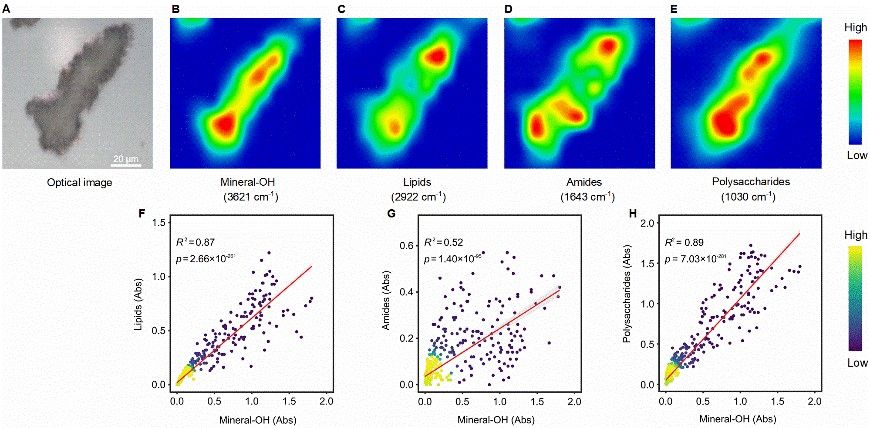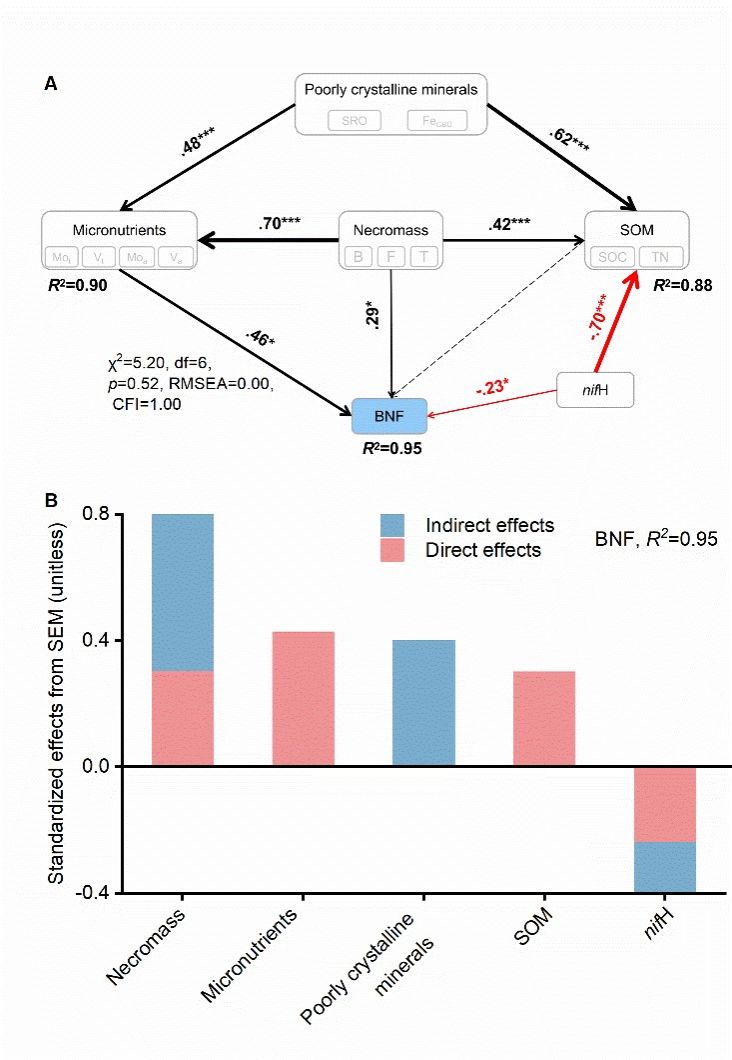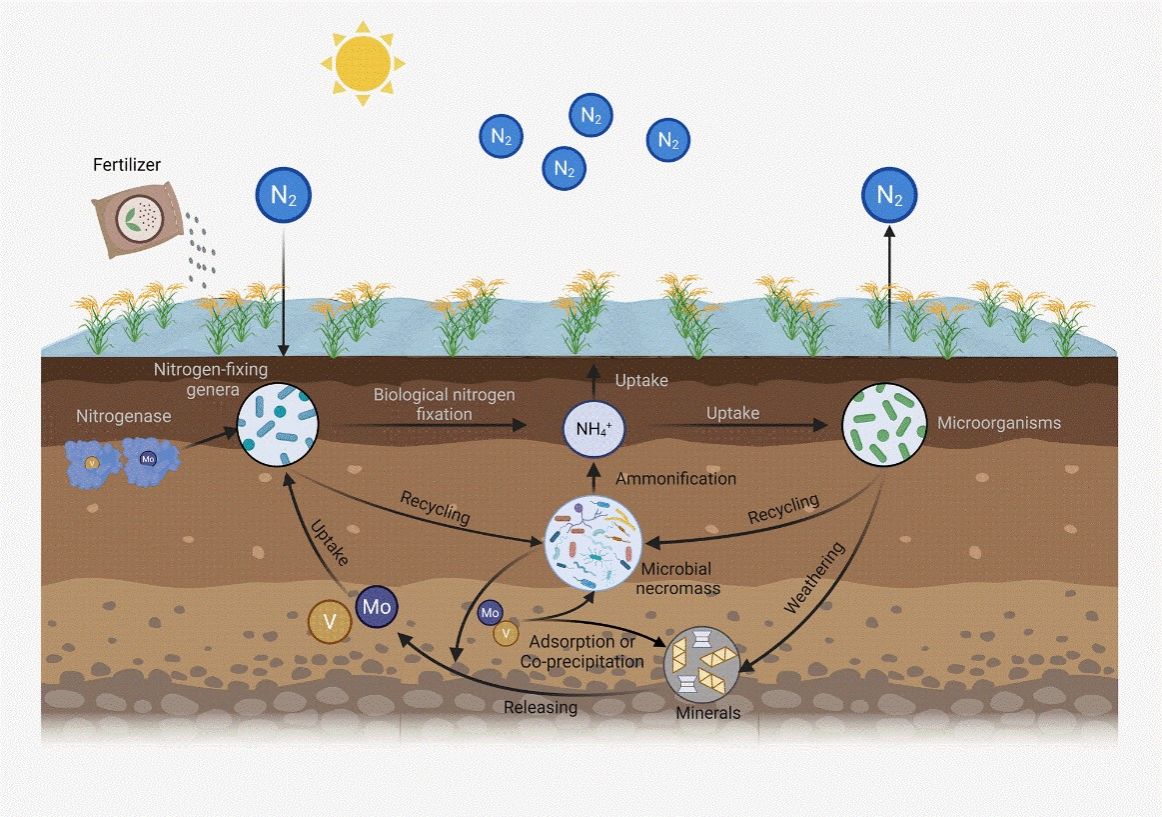Paddy fields, as the largest anthropogenic wetlands on Earth, face a high risk of micronutrient loss through surface runoff and leaching due to their frequent irrigation-drainage cycles, as well as removal with crop harvest. While micronutrient’s losses largely impede biological nitrogen fixation (BNF) in soils, agricultural practices and mechanisms that retain micronutrients and thus increase BNF in paddy soils remain underexplored. Here we showed that the long-term (40 years) application of fertilizers increased the contents of microbial necromass in paddy soils by 20%–43% compared to the unfertilized control. In particular, long-term organic fertilizations increased poorly crystalline minerals through intensifying mineral weathering, which further contributed to the increased stable carbon burials in paddy soils. Synchrotron radiation based spectromicroscopy analysis provided direct evidence demonstrating a differential control of hydroxyl functional groups from mineral surfaces on C functional groups at the submicron scale in paddy soils. Notably, microbial necromass and short-range ordered minerals had a strong correlation with the content and bioavailability of micronutrients in paddy soils, indicating their key roles in the retention of micronutrients. Metagenomic sequencing analysis further indicated that the content and bioavailability of micronutrients were strongly correlated with the abundance of the key N-fixing genera (i.e., Azospirillum and Bradyrhizobium). Unexpectedly, structural equation modeling (SEM) identified that microbial necromass exerted the strongest control on N-fixing genera, highlighting an underappreciated role of microbial necromass as a reservoir of micronutrients. Based on micronutrient’s bioavailability and metagenomic sequencing, we conclude that micronutrients are the key factor for BNF in paddy soils, offering significant implications for managing BNF in paddy soils.

Figure 1. Mapping and correlations of mineral and carbon functional groups in long-term fertilized paddy soils.

Figure 2. Direct and indirect effects of edaphic factors on nitrogen-fixing genera

Figure 3. Conceptual diagram of the retention and bioavailability of microbial necromass and minerals to micronutrients that facilitate biological nitrogen fixation in paddy soils
The research has been published in Fundamental Research (2024) as the Article “Key role of microbial necromass and iron minerals in retaining micronutrients and facilitating biological nitrogen fixation in paddy soils”. Miss. Li-Xin Xu is the first author of this paper, with Prof. Guang-Hui Yu as the corresponding author. This work was supported by the National Natural Science Foundation of China (U22A20608, 42293264, and 41977271), Fujian Natural Science Foundation (2021J01479), Fujian Field Scientific Observation and Research Station of Minhou Farmland Ecosystem (MKJ[2018] No.17), “5511” Collaborative Innovation Project (XTCXGC2021009). Y.K. thanks for the support by the RUDN University Strategic Academic Leadership Program.
Paper Information: Li-Xin Xu, Fei Wang, Yao Yao, Minjie Yao, Yakov Kuzyakov, Guang-Hui Yu*, Cong-Qiang Liu, Key role of microbial necromass and iron minerals in retaining micronutrients and facilitating biological nitrogen fixation in paddy soils, Fundamental Research, 2024, https://doi.org/10.1016/j.fmre.2024.02.007.